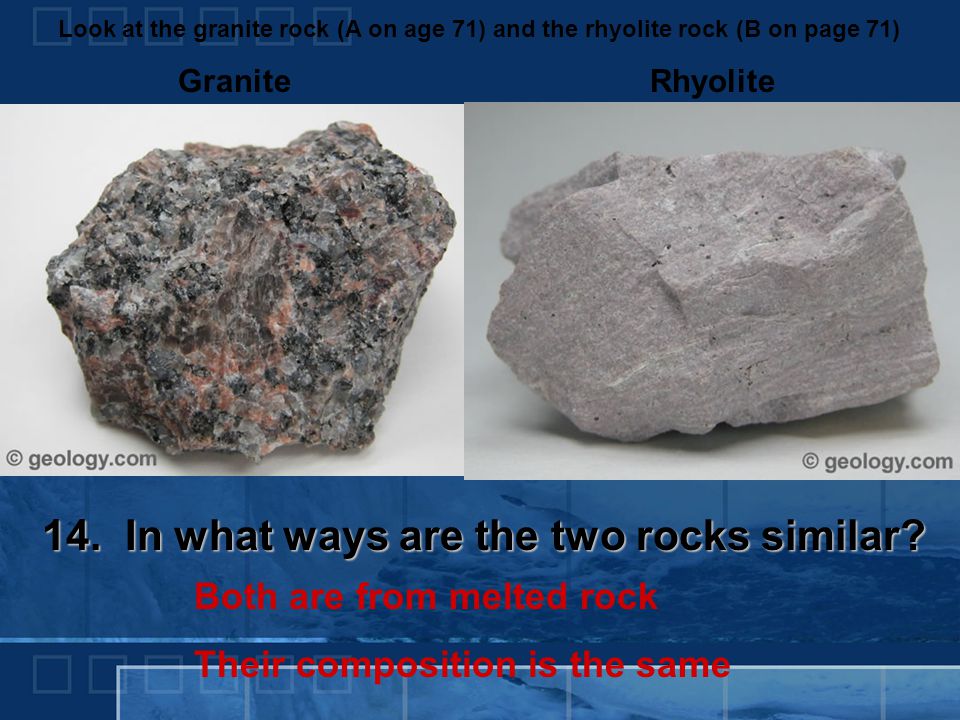Chemical weathering changes the composition of a rock.
Compare and contrast the mineralogical composition of granite and rhyolite.
Gabbro obsidian granite and andesite.
Compare and contrast granite and rhyolite.
As nouns the difference between granite and rhyolite is that granite is rock a group of igneous and plutonic rocks composed primarily of feldspar and quartz usually contains one or more dark minerals which may be mica pyroxene or amphibole granite is quarried for building stone road gravel decorative stone and tombstones common colors are gray white pink and yellow brown while.
Felsic rocks are a type of igneous rock that are comprised of light.
Rhyolite is the felsic igneous rock with fine grained size.
Therefore granite has a phaneritic texture while rhyolite is formed extrusively and so has an aphanitic texture.
The difference is the size of grains.
They are different in that granite forms when magma cools intrusively.
Rhyolite however is typically not found as often or as voluminous as granite which is found in large deposits all over the place.
The difference is that granite sits on the plutonic diagram and rhyolite sits on the volcanic diagram.
Whereas granite is the equivalent in composition but with coarse grained size.
Granite forms deep beneath the surface and therefore is coarse grained.
The difference between them is that granite cools slowly.
The difference is the size of grains.
5 2 composition 5 2 1 mineral content.
Rhyolite is the felsic igneous rock with fine grained size.
Rhyolite forms at much shallower depths and thus is fine grained.
Obsidian is likely felsic.
Classify each of the following rocks by their mineral composition felsic intermediate or mafic.
Whereas granite is the equivalent in composition but with coarse grained size.
Granite and rhyolite are similar in that they have the same mineral chemical composition.
Both granite and rhyolite are felsic igneous rocks formed from very viscous silica rich magma.
Rocks are composed of different elements and materials.
Granite is an intrusive igneous rock which is very hard crystalline and is visibly homogeneous in texture and forms by melting of continental rocks rhyolite is a felsic extrusive rock and due to its high silica content rhyolite lava is very viscous and is volcanic equivalent of granite.

